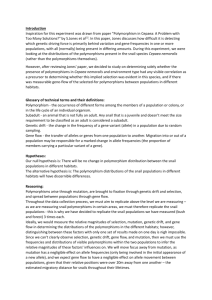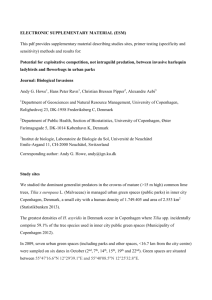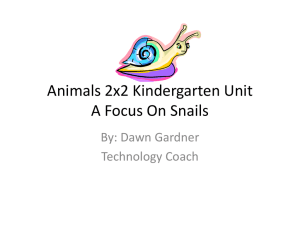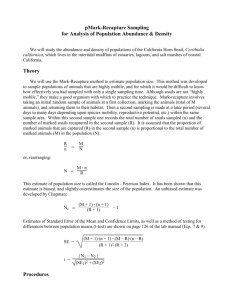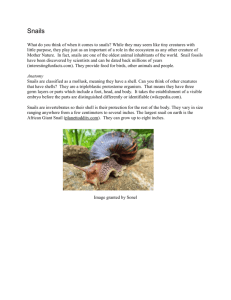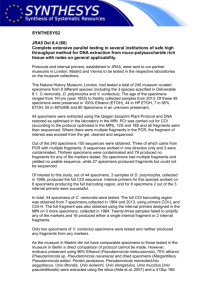Introduction for Evolutionary Genetics Field Course
advertisement
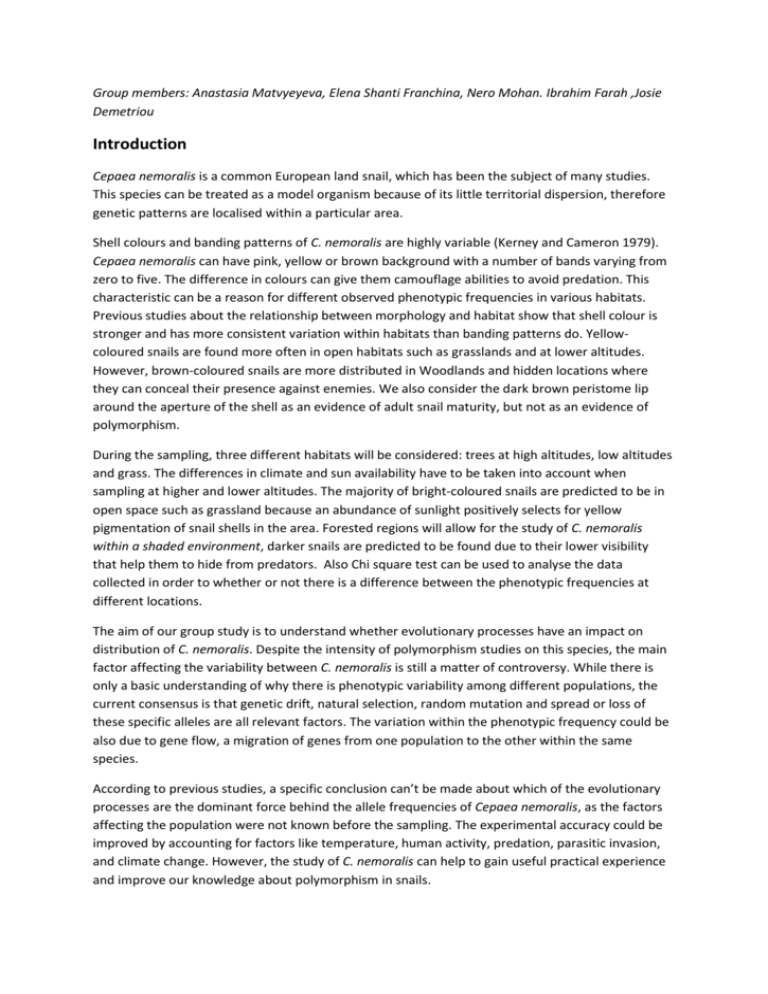
Group members: Anastasia Matvyeyeva, Elena Shanti Franchina, Nero Mohan. Ibrahim Farah ,Josie Demetriou Introduction Cepaea nemoralis is a common European land snail, which has been the subject of many studies. This species can be treated as a model organism because of its little territorial dispersion, therefore genetic patterns are localised within a particular area. Shell colours and banding patterns of C. nemoralis are highly variable (Kerney and Cameron 1979). Cepaea nemoralis can have pink, yellow or brown background with a number of bands varying from zero to five. The difference in colours can give them camouflage abilities to avoid predation. This characteristic can be a reason for different observed phenotypic frequencies in various habitats. Previous studies about the relationship between morphology and habitat show that shell colour is stronger and has more consistent variation within habitats than banding patterns do. Yellowcoloured snails are found more often in open habitats such as grasslands and at lower altitudes. However, brown-coloured snails are more distributed in Woodlands and hidden locations where they can conceal their presence against enemies. We also consider the dark brown peristome lip around the aperture of the shell as an evidence of adult snail maturity, but not as an evidence of polymorphism. During the sampling, three different habitats will be considered: trees at high altitudes, low altitudes and grass. The differences in climate and sun availability have to be taken into account when sampling at higher and lower altitudes. The majority of bright-coloured snails are predicted to be in open space such as grassland because an abundance of sunlight positively selects for yellow pigmentation of snail shells in the area. Forested regions will allow for the study of C. nemoralis within a shaded environment, darker snails are predicted to be found due to their lower visibility that help them to hide from predators. Also Chi square test can be used to analyse the data collected in order to whether or not there is a difference between the phenotypic frequencies at different locations. The aim of our group study is to understand whether evolutionary processes have an impact on distribution of C. nemoralis. Despite the intensity of polymorphism studies on this species, the main factor affecting the variability between C. nemoralis is still a matter of controversy. While there is only a basic understanding of why there is phenotypic variability among different populations, the current consensus is that genetic drift, natural selection, random mutation and spread or loss of these specific alleles are all relevant factors. The variation within the phenotypic frequency could be also due to gene flow, a migration of genes from one population to the other within the same species. According to previous studies, a specific conclusion can’t be made about which of the evolutionary processes are the dominant force behind the allele frequencies of Cepaea nemoralis, as the factors affecting the population were not known before the sampling. The experimental accuracy could be improved by accounting for factors like temperature, human activity, predation, parasitic invasion, and climate change. However, the study of C. nemoralis can help to gain useful practical experience and improve our knowledge about polymorphism in snails. Word count: 514 Group members: Anastasia Matvyeyeva Elena Shanti Franchina Nero Mohan Ibrahim Farah Josie Demetriou
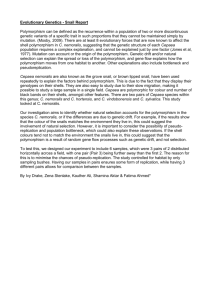
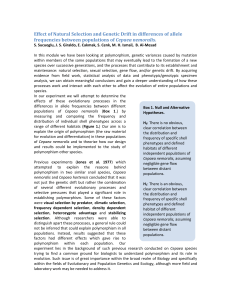
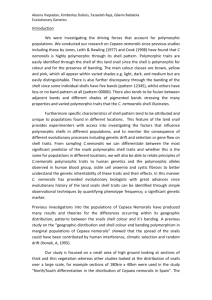
![Evo_Gen_Group_Introfinal_draft_[1.2]](http://s3.studylib.net/store/data/006798616_2-2ab0c6a2225107e0fac598a2105db405-300x300.png)
